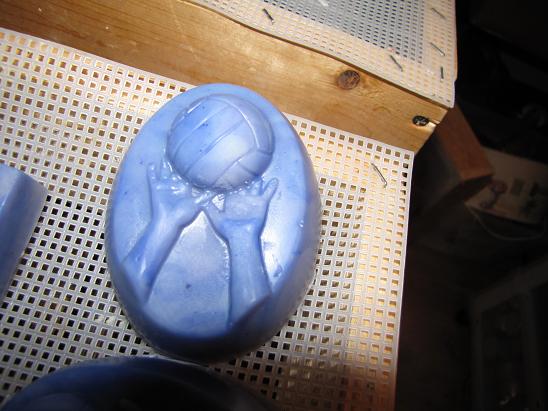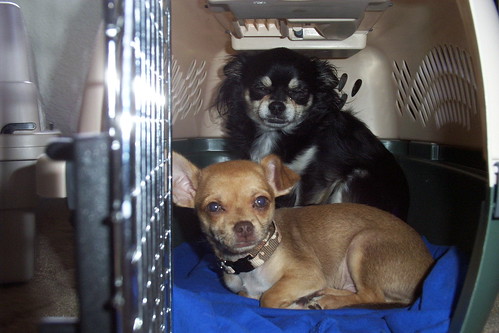
A fragrance oil is an aroma compound (a chemical compound that has a smell or odor) that, unlike the essential oil that comes from a plant, is a synthetic blend. Like the essential oils it must be volatile so it can be smelled through the olfactory system in the upper part of the nose. It also needs to be a high enough concentration to interact with the olfactory receptors.
Chemical synthesis is using chemical reactions to get a product. Using physical and chemical procedures one set of chemical substances is transformed to another. This helps insure the product will be able to be reproduced in other labs and the end product will be reliable. The process begins by selecting compounds know as reagents or reactants. They are "substances or compounds that are added to a system in order to bring about a chemical reaction or are added to see if a reaction occurs". The difference between the two is specifically a reactant is a "substance that is
consumed in the course of a chemical reaction". Compounds are mixed in a reaction vessel such as a round-bottom flask. This link shows a list of the most well known reactions and reagents in organic chemistry.
http://en.wikipedia.org/wiki/List_of_reactionsSome examples of Aroma Compounds are Esters, Terpenes, Cyclic Terpenes and Aromatics.
Esters include Methyl Butyrate (fruity, apple and pineapple), Ethyl Acetatea (sweet, solvent, also found naturally in wine), and Isoamyl Acetate (fruity, banana and pear). The Esters do not have many of their scents, except wine, occur in nature.
Terpenes include Myrcene (woody, complex, found in Verbena and bay in nature), Geraniol (a rose, flowery scent found in geraniums and lemon), and Citronellol (lemon scent that is found in lemongrass in nature).
Cyclic Terpenes include Limonene (orange fragrance), Terpineol (lilac), and Thujone (minty).
Aromatics include Benzaldehyde (almond), Vanillin (vanilla), and Thymol (thyme).
There is also the
Amines, but with fishy, fecal scents I would not use them for fragrance in soap.
A list of aroma compounds can be found here.
http://en.wikipedia.org/wiki/Aroma_compoundAroma compounds are found in food, wine, spices, and flavorants to improve their appeal. Scents that are not found in nature can be provided by synthesized odorants. Essential Oils that are very expensive, such as Rose, or are an endangered plant, such as Sandalwood, can be substituted with a Fragrance Oil. While plant scents vary by the locations and times they are harvested, synthetics are more consistent.
I first made soap using Essential Oils only. Until I started learning a bit about scent and fragrance and blending my selection was limited to the oils I could afford to buy. I was introduced to Fragrance Oils on a soap forum and soon became a "scent-a-holic". I soon had 60 different scents lining the shelves and more soap than I knew what to do with. Some of the fragrance oils smell so good in soap I would walk by some curing soap and take a deep whiff!

This is Cucumber Melon Soap. You can buy it here
http://www.sierrasnowsoaps.com/11.html.
My first supplier of Fragrance Oils was Cybilla. Ummm, her Cucumber Melon and Dragons Blood went straight to your head. Her line was bought out by Anne-Marie, the owner of Brambleberry Soap Making Supplies.
http://www.brambleberry.com/ I buy a lot of my Fragrance Oils here. They smell terrific, behave well in soap making, and the prices are in my budget.

This is Sunkissed Currant Soap. You can buy it here
http://www.sierrasnowsoaps.com/11.html.
Another supplier I use is Oregon Trail Soap Supplies
http://www.oregontrailsoaps.com/. Suz is the owner with her husband Rick. I had the pleasure of meeting her one year while in Oregon. It was incredible being around the supplies in the
LARGE sizes.
The third supplier I use is Southern Garden Scents
http://southerngardenscents.com/. They used to be Tony's Fragrance oils.
All three of these suppliers are wonderful to work with. They ship quickly, everything is packaged in wrapping to insure nothing breaks or leaks. They all test their Fragrance Oils to give the customer the best information on how it will behave in different types of soap. They all are in the "know" about which fragrances are popular and all add new scents continually. That is where I get into trouble. They all just smell so good, it is hard to decide which scents to use.
































